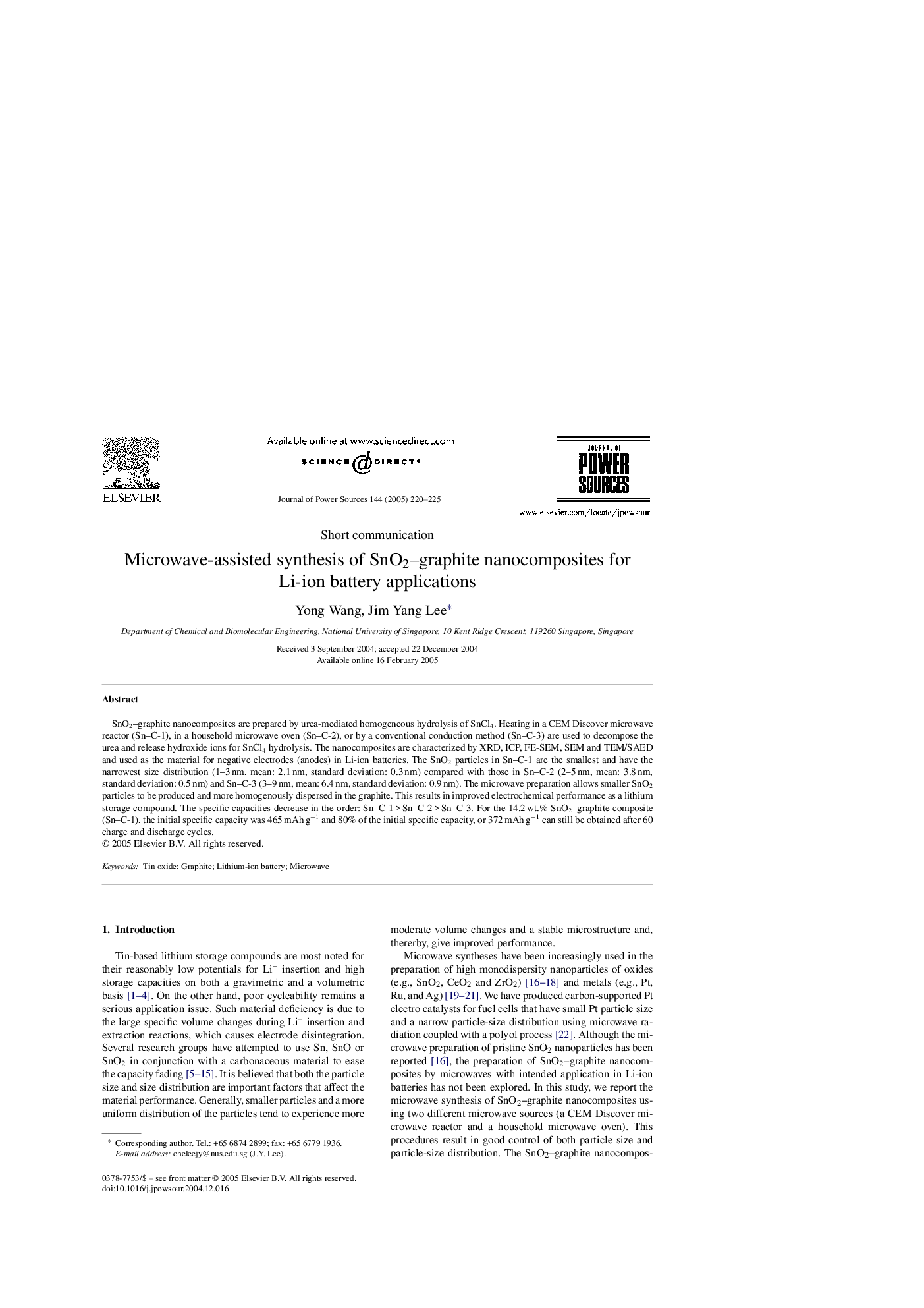| Article ID | Journal | Published Year | Pages | File Type |
|---|---|---|---|---|
| 10567384 | Journal of Power Sources | 2005 | 6 Pages |
Abstract
SnO2-graphite nanocomposites are prepared by urea-mediated homogeneous hydrolysis of SnCl4. Heating in a CEM Discover microwave reactor (Sn-C-1), in a household microwave oven (Sn-C-2), or by a conventional conduction method (Sn-C-3) are used to decompose the urea and release hydroxide ions for SnCl4 hydrolysis. The nanocomposites are characterized by XRD, ICP, FE-SEM, SEM and TEM/SAED and used as the material for negative electrodes (anodes) in Li-ion batteries. The SnO2 particles in Sn-C-1 are the smallest and have the narrowest size distribution (1-3 nm, mean: 2.1 nm, standard deviation: 0.3 nm) compared with those in Sn-C-2 (2-5 nm, mean: 3.8 nm, standard deviation: 0.5 nm) and Sn-C-3 (3-9 nm, mean: 6.4 nm, standard deviation: 0.9 nm). The microwave preparation allows smaller SnO2 particles to be produced and more homogenously dispersed in the graphite. This results in improved electrochemical performance as a lithium storage compound. The specific capacities decrease in the order: Sn-C-1 > Sn-C-2 > Sn-C-3. For the 14.2 wt.% SnO2-graphite composite (Sn-C-1), the initial specific capacity was 465 mAh gâ1 and 80% of the initial specific capacity, or 372 mAh gâ1 can still be obtained after 60 charge and discharge cycles.
Related Topics
Physical Sciences and Engineering
Chemistry
Electrochemistry
Authors
Yong Wang, Jim Yang Lee,
